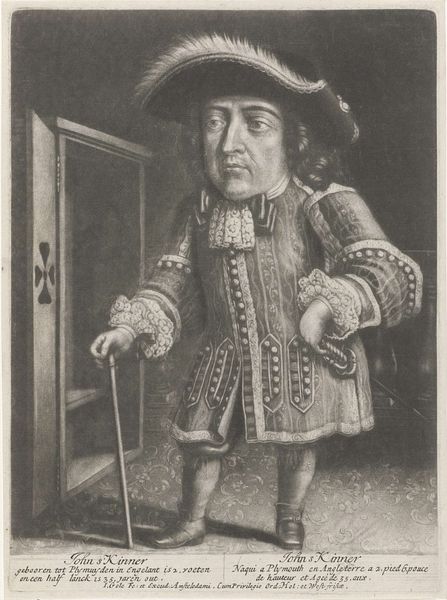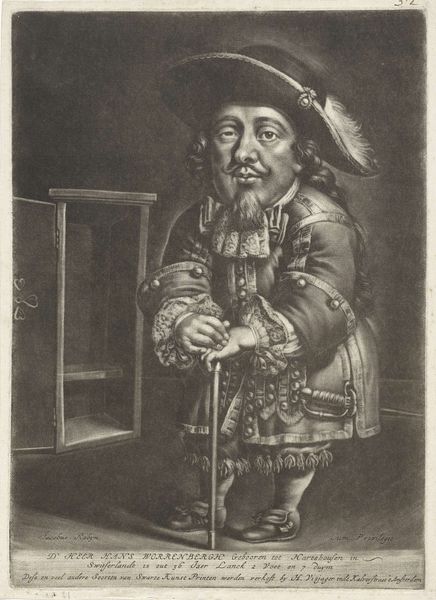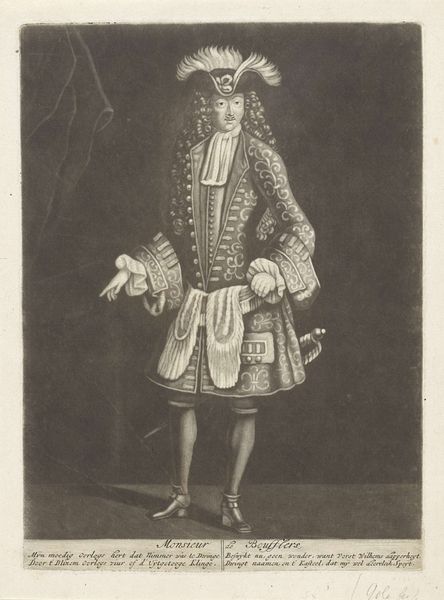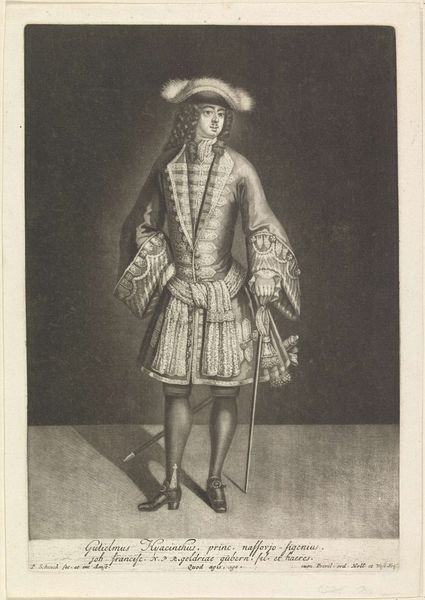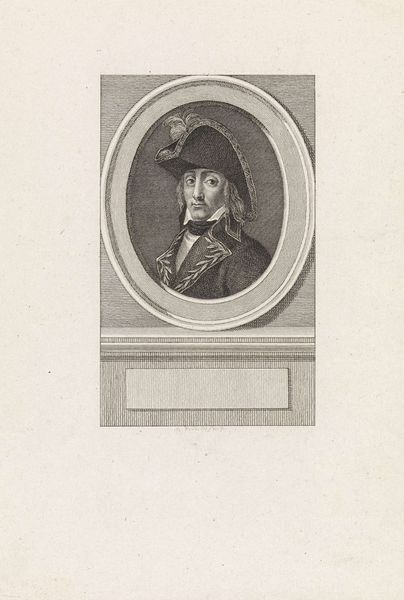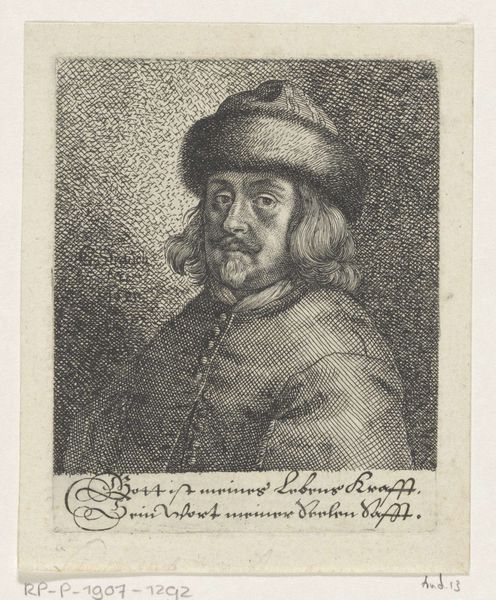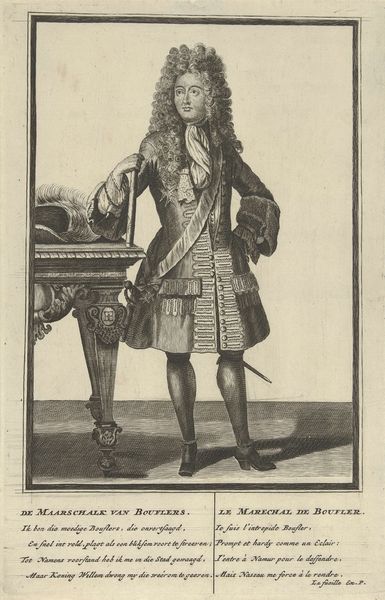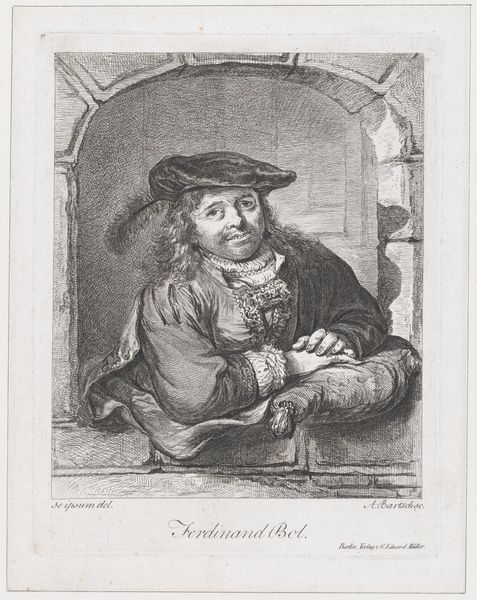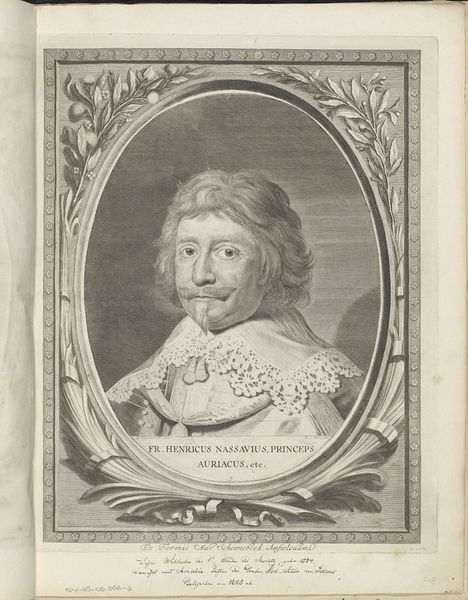
print, engraving
#
portrait
#
baroque
#
dutch-golden-age
# print
#
caricature
#
figuration
#
line
#
history-painting
#
engraving
Dimensions: height 248 mm, width 178 mm
Copyright: Rijks Museum: Open Domain
Editor: So, this is "Portret van Hans Worrenbergh," a print by Pieter Schenk, dating roughly from 1670 to 1713. What strikes me is the exaggerated nature of the figure; it's almost cartoonish. What do you make of it? Curator: This print, while seemingly lighthearted, opens up a conversation about power, representation, and social critique within 17th-century Dutch society. Consider the context: the Dutch Golden Age, a time of immense wealth, but also sharp social hierarchies. What might this caricatured depiction of Hans Worrenbergh, supposedly from Switzerland, be suggesting about his social standing or perhaps Dutch perceptions of foreigners? Editor: I guess it's not just a funny picture then. So the exaggeration… the large head and tiny body… that's deliberate commentary? Curator: Absolutely. Think about the function of caricature. It often targets those in positions of power, subtly undermining their authority through humor. Also, look at the details in his attire – the lace, the feathered hat. Are these markers of status being mocked, made ridiculous? How might anxieties around wealth and status be playing out here? Editor: I hadn't thought about it that way. It’s like the artist is using humor as a tool. Was this common? Curator: It was, and still is! Caricature offers a safe, subversive space for questioning societal norms. Moreover, considering the print medium, it allowed for wider dissemination, reaching diverse audiences and potentially amplifying these critiques. Do you think it changes our view of what ‘history painting’ means when considering it this way? Editor: It does! It shows that even portraits, seemingly straightforward depictions, can be loaded with social commentary and critique. It really expands how I see art from this period. Curator: Precisely. It prompts us to look beyond the surface and consider the social and political dialogues embedded within these seemingly simple images.
Comments
No comments
Be the first to comment and join the conversation on the ultimate creative platform.
